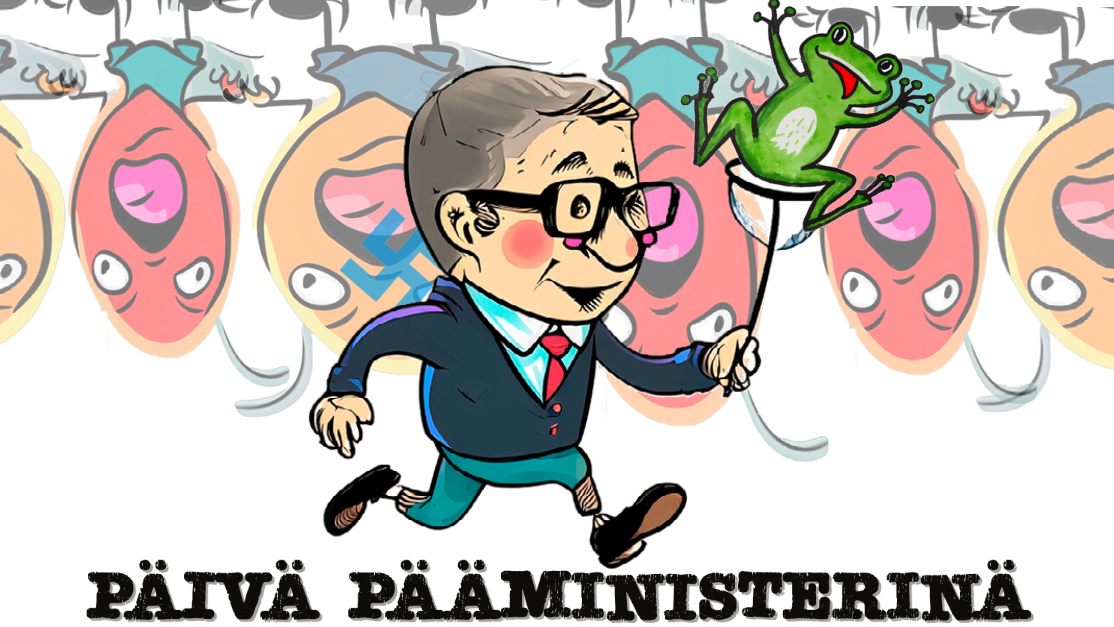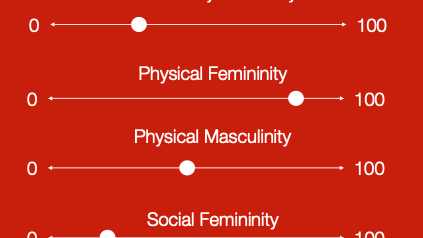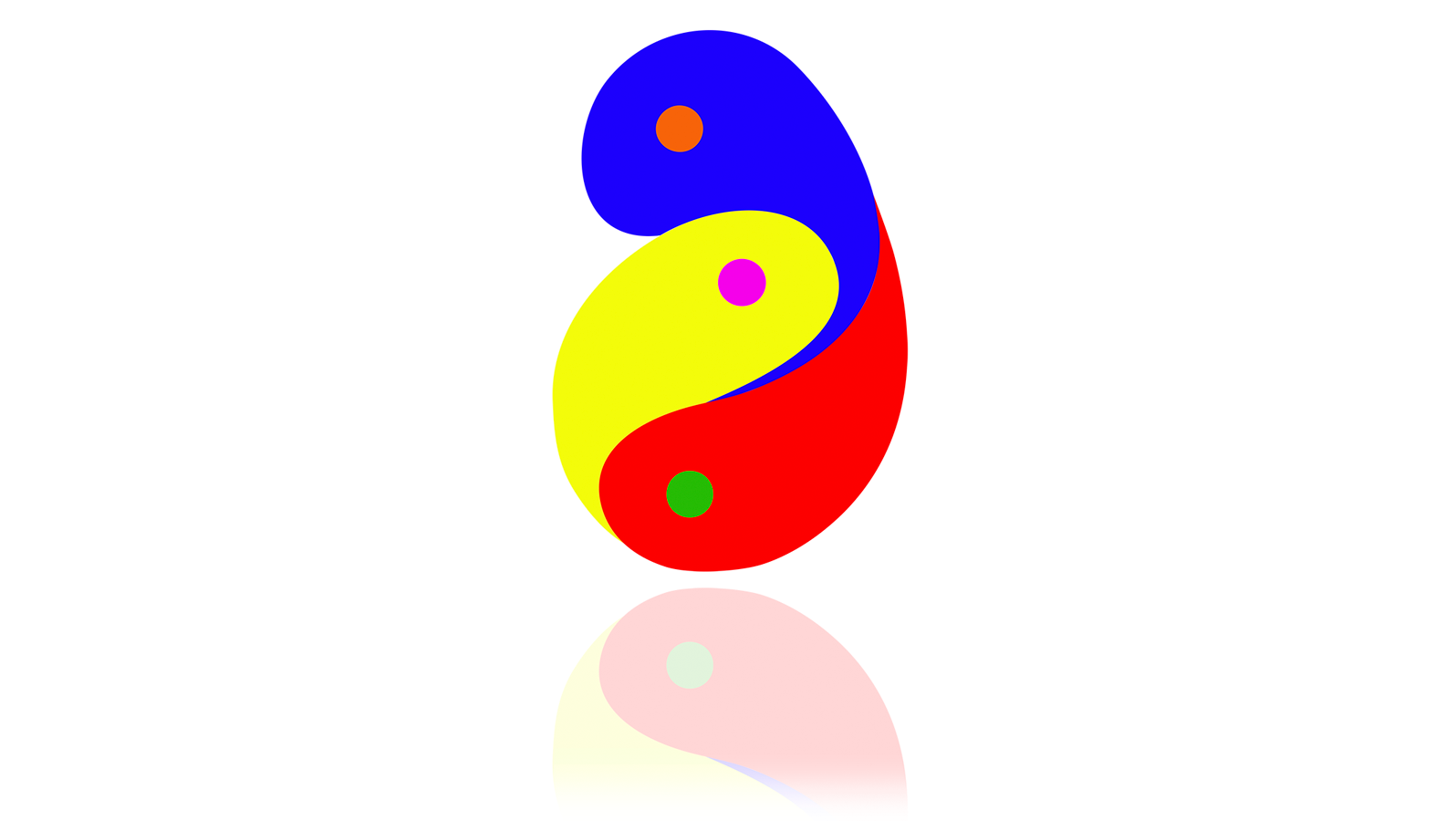On The Battlefield Between Sexes
The above collage is from my work '100 and One Sex-Gender Variations' (2016-2017), in which I asked people to playfully define their own feminine and masculine sides on a scale of 0-100. I wanted to demonstrate how few people defined themselves as 100% male or female, even though language and legislation still direct us towards binary categories of man and woman.
On The Battlefield Between Sexes
I explore in my project, 'On the Battlefield Between Sexes,' the definition of sex through artistic works. My goal is to demonstrate that scientifically-based evidence can be used to challenge laws that perpetuate gender inequality.
In my work, I challenge the typical academic notion of sex and gender as separate entities. The concept of gender was developed in the 1960s when doctors performed surgeries on intersex babies to give them typical male or female genitals, even when there was no medical reason to do so. This practice has caused serious psychological trauma for many individuals with intersex conditions, whose sex identity does not align with the doctor's chosen and modified sex characteristics.
Despite these traumatic effects, the feminist movement adopted the concept of gender as a political weapon in the 1970s, in order to argue for equality by stating that there are no biological differences in the abilities of men and women. (The topic is further discussed by Jemina Repo, a lecturer at Newcastle and docent at the University of Helsinki, in her article 'Unlearning Gender').
Equality can be argued for without dismissing biology; no person is 100% biologically male or female, and the boundary between male and female cannot be determined due to intersex traits. Therefore, laws that perpetuate gender inequality can be challenged with scientific arguments, as sex is a spectrum rather than binary.
Self portrait as a male (2006) and as a female (2009)
Sex is a spectrum
Typical sexual differences between women and men can be observed by examining populations widely. These differences have also been observed in the behaviour of our primate relatives. For example, studies have shown that female apes usually choose a doll as their toy, while male apes prefer a car or tractor.
This cannot be used as evidence that all women or all men are naturally different, as nature is full of variations. Every person has varying degrees of both feminine and masculine traits from birth, and these traits often cross over, so it is not possible to conclude a person's gender identity based solely on external sex characteristics.
The genitals develop from the same embryonic structures, and they differentiate towards the female and/or male direction usually after the seventh week of pregnancy.
A person can also have the genetic makeup of two different individuals (chimerism), resulting in having the typical physiological characteristics of both sexes
Hijra, oil on fabric, 80x60 cm, 2007
The biological development of sex characteristics is not fully understood, but it is known that the SRY gene plays a significant role in the development of the testes. The SRY gene is typically located on the Y chromosome, but occasionally it can be found on the X chromosome, which can result in a person with a male-typical body having an XX chromosome set. However, there are also individuals who have a male-typical body but do not have the SRY gene.
Humans can also have other atypical sex chromosomes, such as XXY, XXYY, XXXY, and XXXX. Science also recognizes individuals who are born with a female-typical body but develop a penis during puberty due to a genetic anomaly. There are also individuals who are born with both a penis and a uterus.
Since sexuality is viewed in medicine as an innate characteristic, it is believed to have a neurological basis. Therefore, a homosexual orientation can be considered as one form of intersexuality. (See, for example, the article written by Brian P. Hanley, PhD in Microbiology: Dual-gender macrochimeric tissue discordance is predicted to be a significant cause of human homosexuality and transgenderism.)
Evolution occurs through variations, so intersexuality is a normal variation in evolution. Sexual variations are natural, so gender (or sex identity) should be defined as a spectrum of traits (feminine, masculine, etc.) rather than as rigid categories (female/male/other).
A Horse and a Man (2008), acrylic on paper 120 x 80 cm
Activism for gender equality
Governments classify individuals as either male or female (or, in some countries, according to a third gender).
If governments followed the rule of law, they could not determine anyone's gender because the determination of legal status cannot be arbitrary. Currently, when states determine the legal gender of a newborn as either male or female, the gender of children with intersex traits is inevitably determined arbitrarily.
Although the characteristics of sex (chromosomes, genes, and physiological traits) can be studied, the boundary between male and female is ambiguous due to the presence of intersex traits.
As an activist, I have sought to influence gender legislation in European Union member states, in order to achieve, for example, equal marriage laws throughout the EU if states were to adhere to the principle of the rule of law.
How Defining Sex as a Spectrum Can Lead to More Equality and Healthier Identity Definition
Defining sex as a spectrum instead of categories would not only lead to more equal legislation but also to healthier identity formation. Many people struggle with not fitting neatly into the categories of male or female, but this is biologically impossible because humans are not 100% male or female biologically. Humans have varying degrees of both male and female physiological characteristics, and for many people, these characteristics overlap in the realm of intersex traits. Human stem cells can be manipulated to become both types of sex cells, so technically every human is both sexes if gender is based on sex cells.
Describing gender with adjectives such as feminine or masculine would be biologically more accurate, and would also open up the possibility of breaking free from narrow gender categories. Instead of identifying myself as falling into one gender category or the other, I usually identify myself as a feminine person with both feminine and masculine physiological traits. This allows me to feel freer from the expectations associated with being a woman.
Shemale Namu, 2020, drawing on paper 30x50 cm
Redefining Sexuality
If sex were defined as a spectrum rather than binary categories, this would challenge the concepts of gay, lesbian, and heterosexual identity, which are based on gender (sex) categories.
I explored this topic through the experimental dating app Pandate (2017-2018), which allowed users to define their gender (sex-identity) and sexuality on a sliding scale without categorization. The project was particularly praised by those who identified as non-binary.
Gay (2005), oil painting 150 x 80 cm kankaalle.
Written works and articles on sex, gender and sexuality
(mostly available in Finnish only)
Valtio ei voi määrätä sukupuoltani (The State Cannot Determine My Gender), published in QX, 2018.
100 ja yksi sukupuolisuutta (100 and One Gender Identities", a community artwork exploring gender on a 0-100 scale of femininity and masculinity. Published between August 2017 and 2018.
PANDATE - Out-of-the-Box Dating, an experimental dating app that does not require specifying one's sex, gender, or sexuality. Published as a web app in 2017-2018.
The Destruction of the Sex and Gender Boxes by Susa Tyrniluoto, Bohem Print (self-published), February 2017.
"On The Battlefield Between Sexes", a lecture given at the University of Turku's Pori Unit as part of the Gender Studies course, 22 November 2017.
"Gender Determination and the Rule of Law", a question I posed to the European Parliament on 25 October 2019. The Commission's reply can be found here: https://www.europarl.europa.eu/doceo/document/E-9-2019-003458-ASW_FI.html"
Sources
Unlearning Gender, The Philosopher, vol. 107, no. 3, Jemina Repo, Lecturer in Gender and Politics at the University of Newcastle and Docent at the University of Helsinki: https://www.thephilosopher1923.org/repo.
Sex differences in rhesus Monkey toy Preferences parallel those of children, Hormones and behaviour vol 54.3 (2008), Hassett, Janice M et al., Https://www.ncbi.nlm.nih.gov/pmc/articles/PMC2583786.
How is biological sex determined ?, Studia Medicina, Chief Physician and Professor of Developmental Biology Hannu Sariola, (HY, HUS), Biology and Psychology of sex/gender, 16 January 2019.
A case report of an incidental finding of a 46, XX, SRY-negative male with masculine phenotype during standard fertility workup with a review of the literature and proposed immediate and long-term management guidance, Fertility and Sterility, Volume 99, Issue 5, 2013, Neil A.J. Ryan, Shahnaz Akbar, https://pubmed.ncbi.nlm.nih.gov/23290744/
Beyond the Sex Binary: Toward the Inclusive Anatomical Sciences Education. Anatomical Sciences Education, Strkalj, Goran & Pather, Nalini. (2020), https://pubmed.ncbi.nlm.nih.gov/32735387/.
Sex Redefined, Nature 518, 288–291 (2015), Claire Ainsworth, https://www.nature.com/articles/518288a
Sexual Orientation: Categories or Continuum? Commentary on Bailey et al. (2016), Ritch C. Savin-Williams, https://doi.org/10.1177/1529100616637618.
Prosociality and a Sociosexual Hypothesis for the Evolution of Same-Sex Attraction in Humans. Front. Psychol, Barron AB and Hare B (2020), https://www.frontiersin.org/article/10.3389/fpsyg.2019.02955.
Robust evidence for bisexual orientation among men, Proceedings of the National Academy of Sciences of the United States of America vol. 117,31 (2020), Jeremy Jabbour et al., https://pubmed.ncbi.nlm.nih.gov/ 32690672.
US proposal for defining gender has no basis in science, Nature, 2018, https://www.nature.com/articles/ d41586-018-07238-8.





